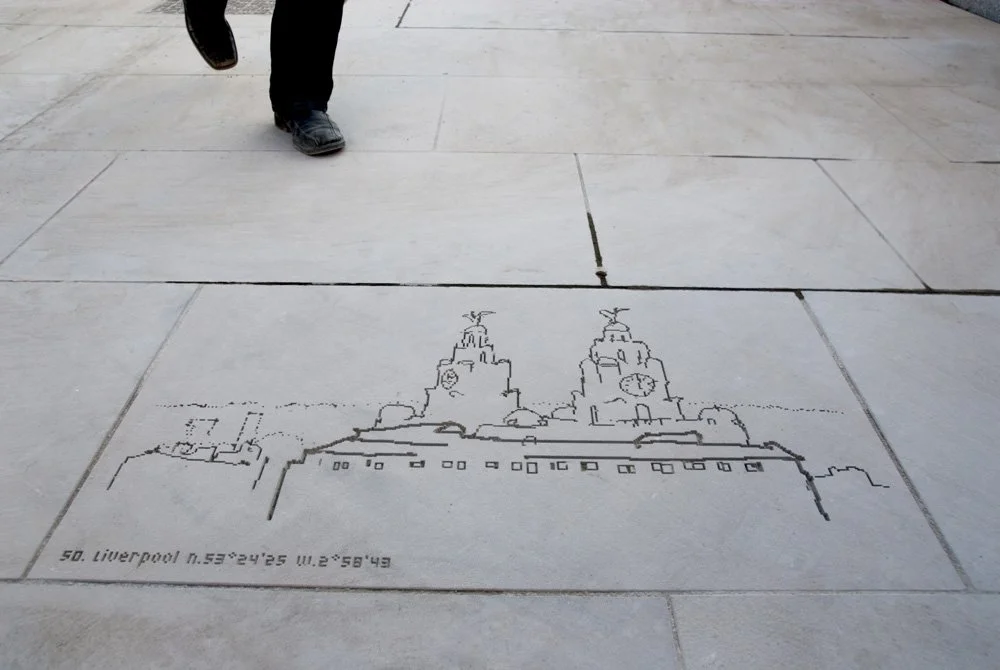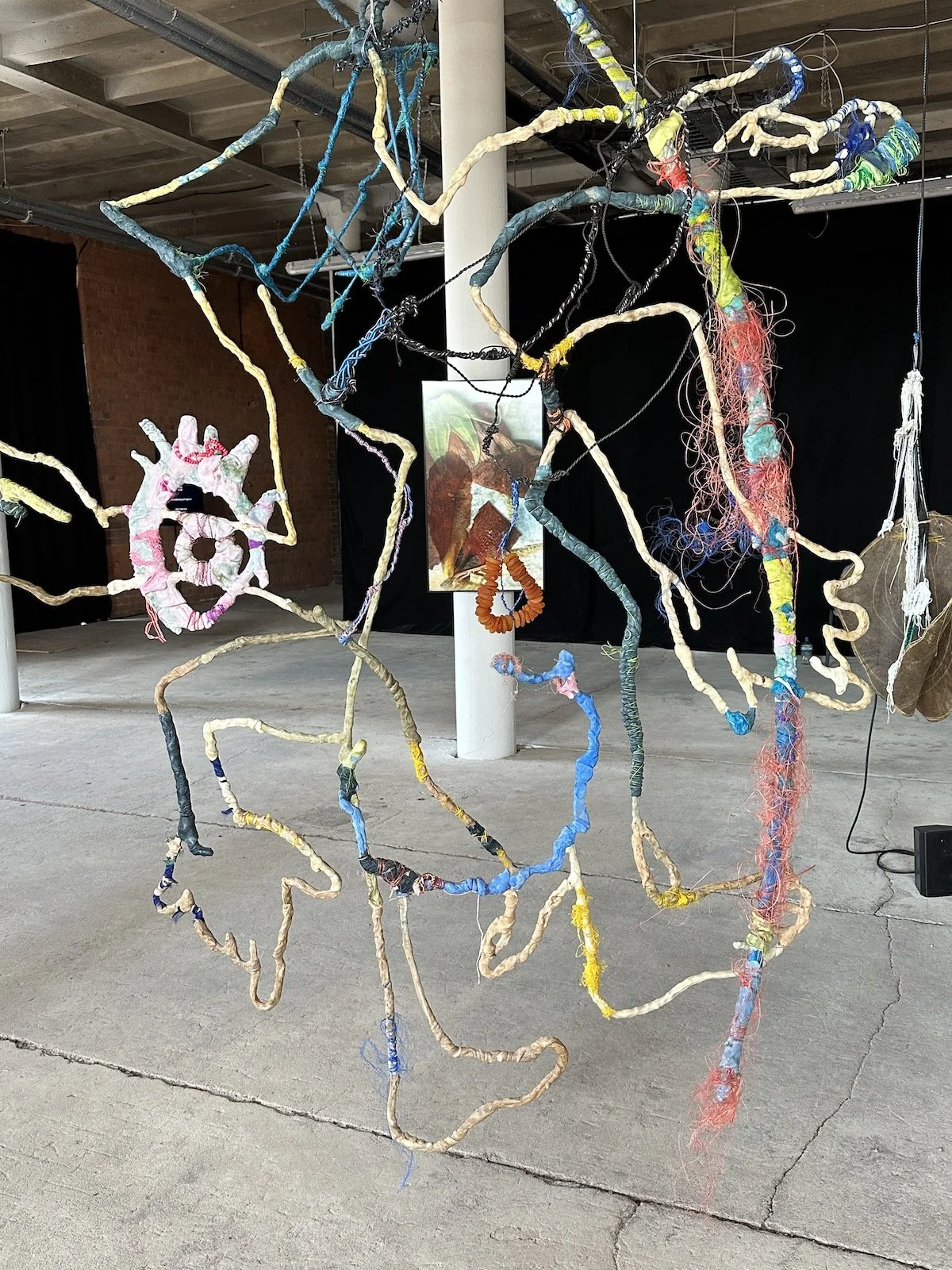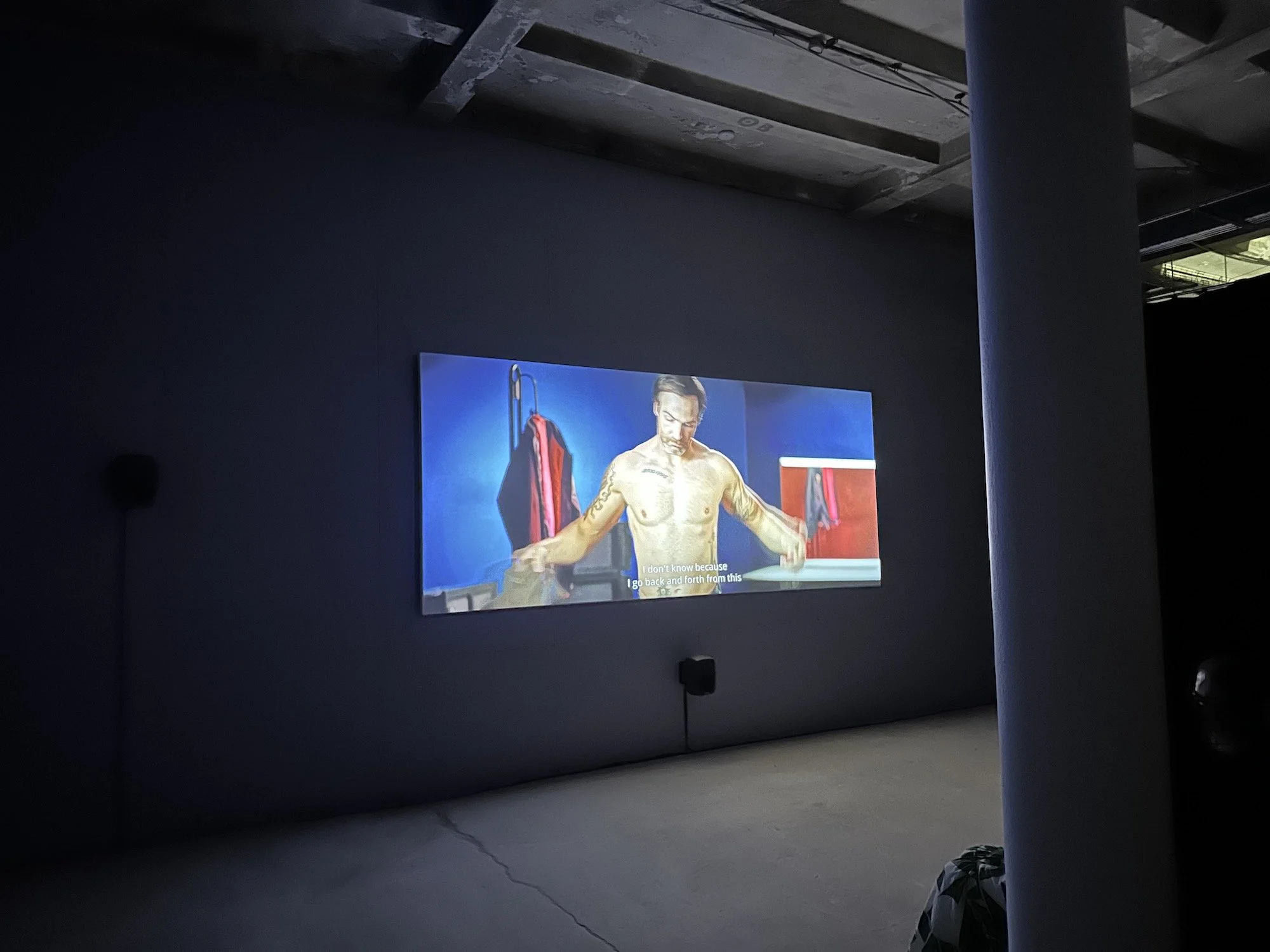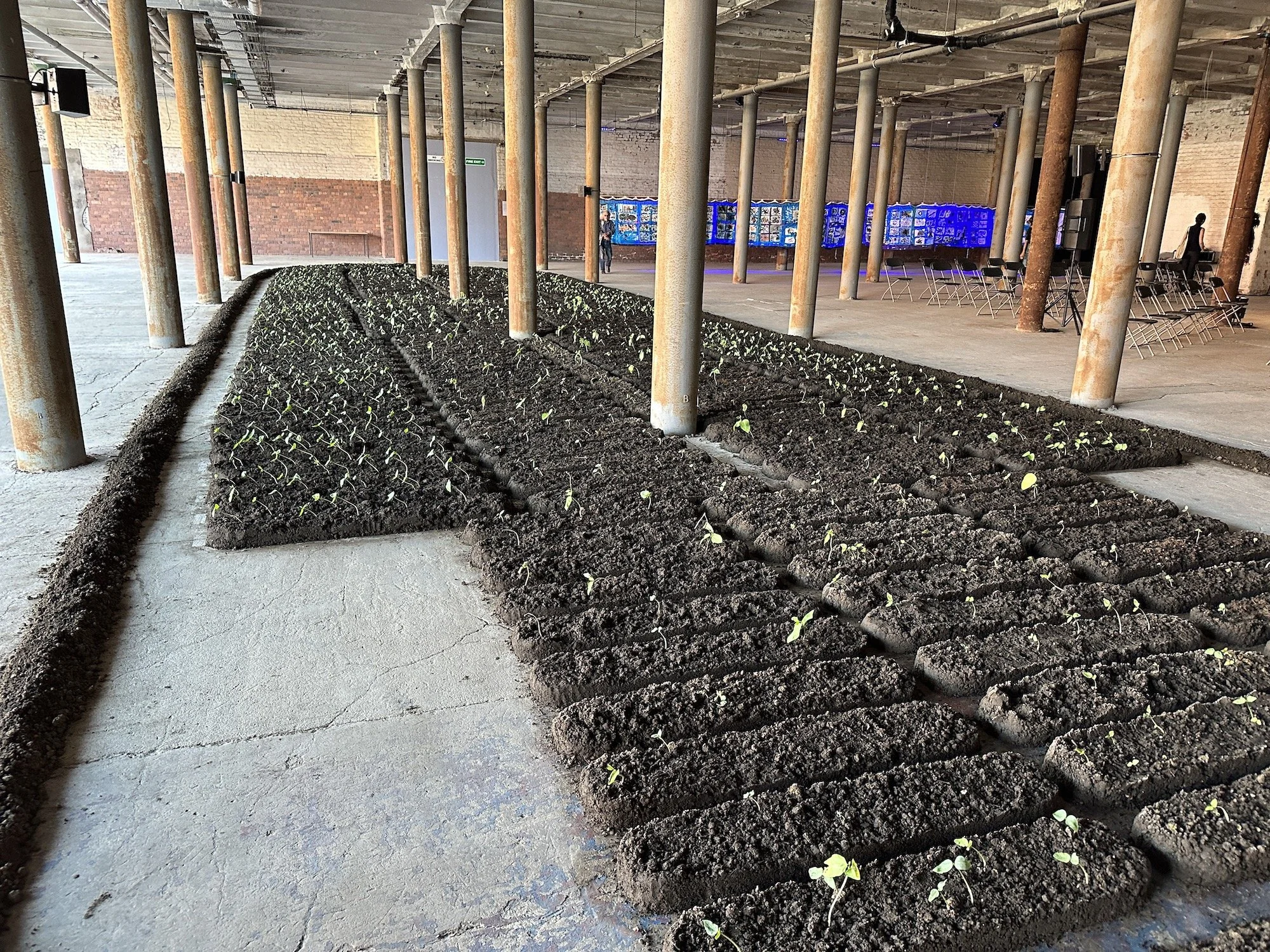uMoyu – The Warehouse - Liverpool Biennale 2023 - A Short Essay
Arriving in Liverpool it was a real pleasure to find Simon Faithfull’s Liverpool-to-Liverpool (2010) commission gracing the steps and glass facade of Lime Street station. A work “describing the dislocation of one person along the historic paths of trade and exodus”, is a thought-provoking prequel to uMoya. It’s a pity that the work is not included in the existing commission list in this year Biennale catalogue.
Simon Faithfull, Liverpool to Liverpool (2010), 181 drawings were made on a journey by container-ship, train and bus from Liverpool (UK) to Liverpool (Nova Scotia) and then sandblasted into the York paving-stones and glass of a new public space at the heart of Liverpool, England.
Khanyisile Mbongwa, the Biennale curator describes the Biennale as ’…a call for ancestral and indigenous forms of knowledge, wisdom and healing; and an exploration of “…the ways in which people and objects have the potential to manifest power as they move across the world.”
It certainly achieves this.
Distributed across a range of venues, the Biennale has for the first time a central location of its own, acting as a hub, at the Tobacco Warehouse.
Rahmia Hamzi’s Parasite (2021), seemed a little lost behind the installation of Julien Creuzet’s series of suspended abstract forms, and video (animation?) works, which dominate and inform the space. Based in Paris, Creuzet illuminates his diasporic experience, focused upon the troubled history of Martinique and modern European history. These elegiac, tactile, colourful forms, depicting, it seems to me body shapes, as well as abstract relationships between materials are both fixed & mobile, hanging such that each intersects with each other. Creuzet’s presents two work, each with expanded quoted titles, “Orpheus was musing upon his braised words, under the light of a blazing fog, snakes are deaf and dumb anyway, oblivion buried in the depths of insomnia “(2022) and “The Possessed of Pigalle or the Tragedy of King Christophe: (Asòtò) HUGONIN [singing] “Damballah, he plant his cord Yes, he plant his corn Mosquito bite him to the blood – This nation not so good, This nation not so good” (2023). However, Creuzet sees the different pieces as parts of one whole…one opera or ecosystem. This is refreshing, particularly as you negotiate the works, glimpsing the video works through the suspended sculptures.
Julien Creuzet, Orpheus was musing upon his braised words, under the light of a blazing fog, snakes are deaf and dumb anyway, oblivion buried in the depths of insomnia, installation view, Liverpool Bienniel, 2022
Melanie Manchot’s Stephen (2023) is presented here as installation, in the Warehouse, alongside the full film, a 70-minute feature. The work explores addiction, here represented by the gambling addiction of the real-life Thomas Goudie. Goudie was an embezzling bank clerk; his arrest the first crime reconstruction and first film made in Liverpool in 1901. Stephen Giddings plays the lead role, drawing upon his own experience of recovery from addiction. This installation version offers an extended encounter of the work than the single screen film. This features multi-screen monitors showing many of the cast, all local people themselves in recovery from various addictions. They discuss the characters in the film, the research they undertook for the character they selected for their audition, and their experience of making the film. The core film and these individual vignettes, all play with time, reference, and narrative – what, within the film is ‘real’, what’s ‘fiction’, what’s ‘in character’, what’s an interview, where is the third wall, what was first? Extensive workshopping has clearly built a very successful community of creative practice, leading to a significant artwork. It’s certainly Shakespearean in its use of story within story, and there’s a hint of Hitchcock in the brief presence of the Director’s shoulder and cheek in one scene – I missed her trousers in another scene.
Slightly at variance with the main themes of uMoya, this work was commissioned several years ago, before this edition’s curator was appointed. Nonetheless, there are synergies, different lived experiences, joy and healing, and though a different context, as Mbongwa says in her catalogue introduction “allowing us to imagine our way through the wound, to clear pathways so we can hold each other with something other than pain”.
Melanie Manchot, Stephen (2023), installation view, Liverpool Biennial
Seeds and soil mark out, at almost one-to-one scale, a plan of the Brooks slave ship, which between 1782 and 1804, departed Liverpool to transport over 5000 slaves from the West Coast of Africa to plantations in the Caribbean. This reimagination of Bonita Diaw’s Chorus of Soil, acts as a temple, a memorial, powerfully bringing together the suffering of transportation, a reclaiming the labour of the plantations, and suggests new life as buds grow and bloom. The installation is accompanied by a new sound work by M NourseSe Philip, incorporating the voices of local people. Locating this work in an old tobacco warehouse, brings this powerful work home.
Binita Dias, Chorus of Soil, installation view, Liverpool Biennial
Mark Segal, June 2023




